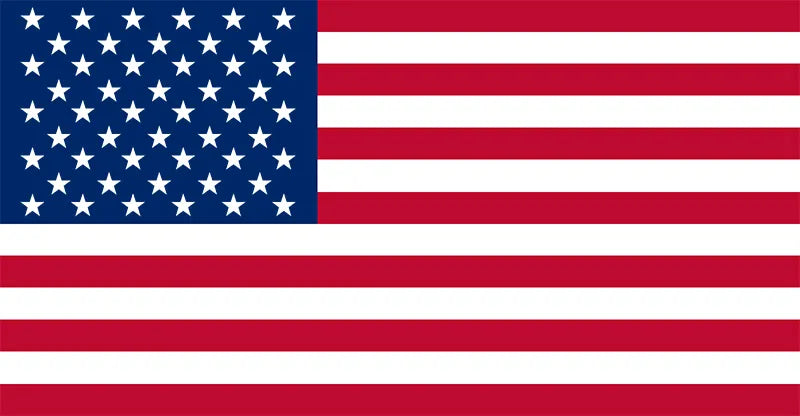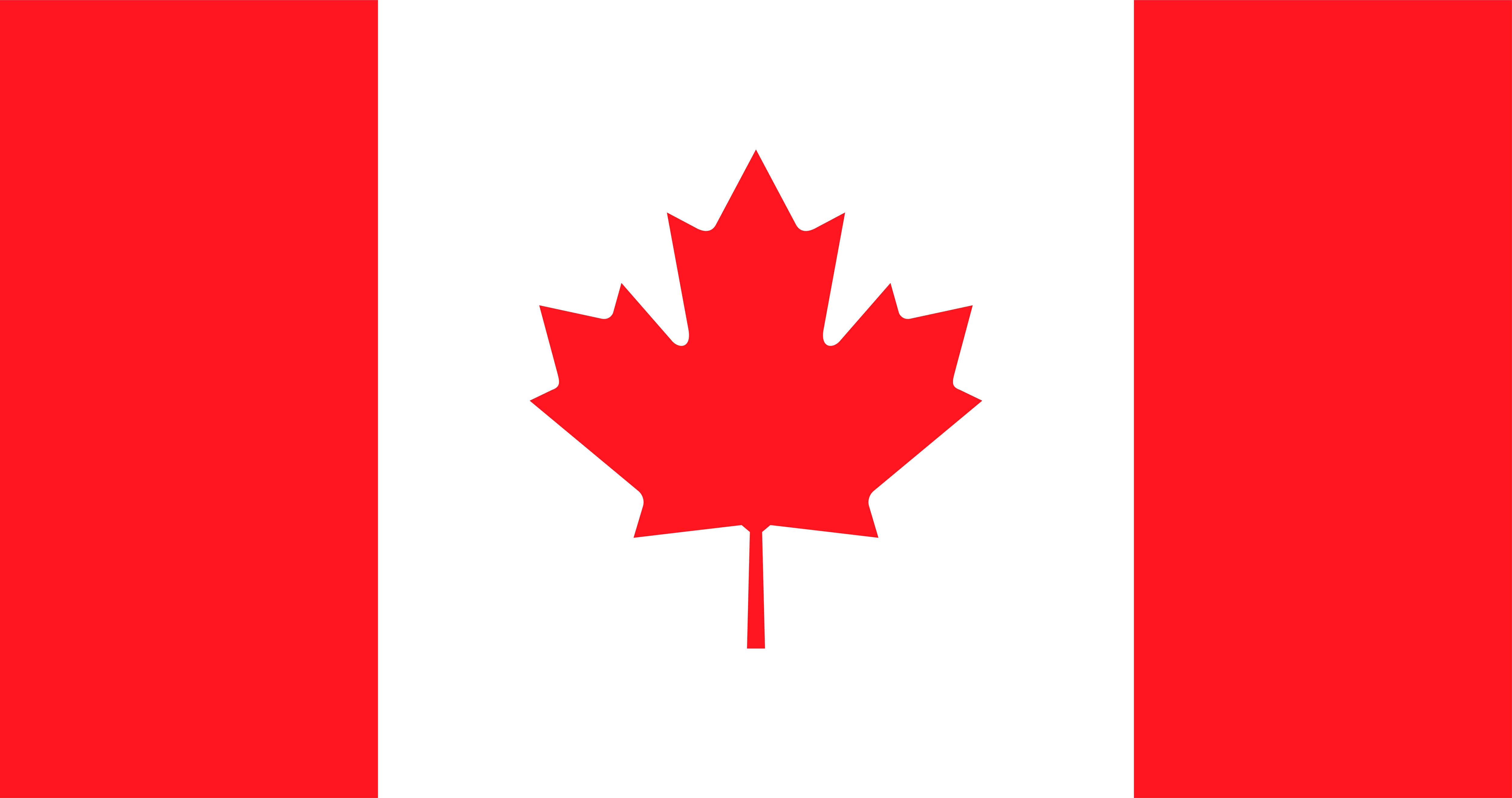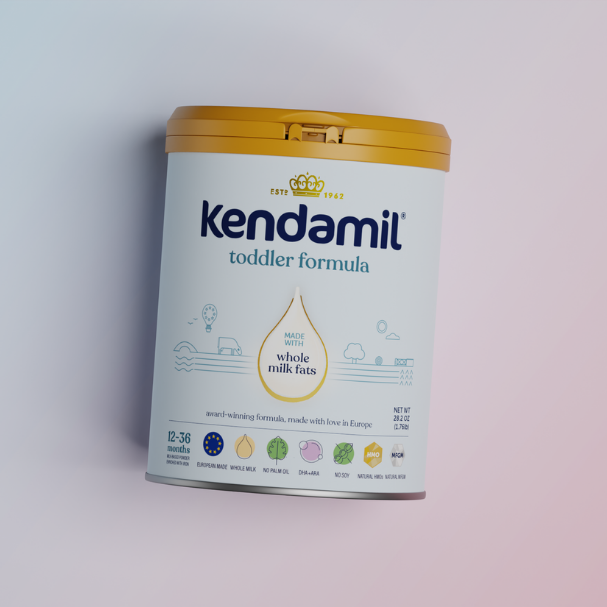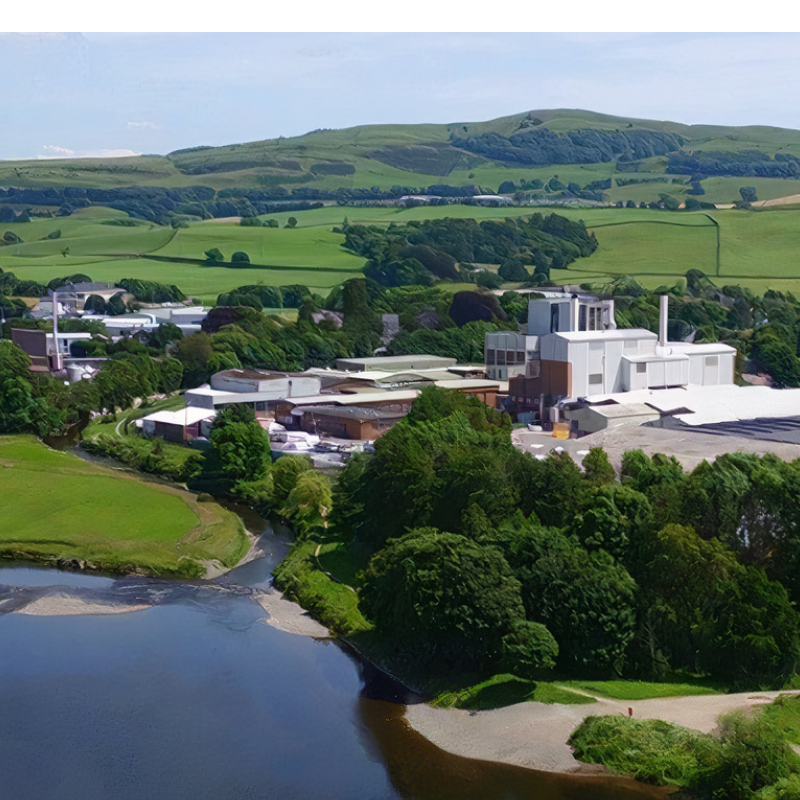For many parents, breastfeeding may not always be a viable option, prompting them to seek the next best alternative to nourish their little ones. While infant formula cannot fully replicate the complexities of human breast milk, it has evolved to provide infants with the essential nutrition they require. In recent times, an increasing number of US parents have turned to European formula brands, enticed by the diverse range of options and unique ingredients they offer.
Off the back of the 2022 formula shortage, the FDA's approval to import certain European-made formulas officially has made popular brands like Kendamil readily available in stores across the United States. In this blog article, we delve into the growing trend of parents embracing European baby formulas as a wholesome substitute to nurture their babies.
So why are European made formulas so sought after and how do they differ from brands you might find on the shelf here in the US?? In this article we’ll delve into the details, empowering you to make an informed decision that aligns with the needs of your family.
Who is regulating the formula?
In Europe, the European Commission ensures that all baby formula in the EU has the appropriate nutritional composition for baby’s healthy growth and development, PLUS they monitor and update the guidelines based on new scientific advice. Here in the US it is the Food and Drug Administration (FDA) regulating infant formula. Just like the European Commission, the FDA are responsible for setting standards for nutritional composition, labelling and so on. Both the European Commission and the FDA have guidelines to protect infants and provide parents with confidence in the safety and quality of the formula they choose.
What EU formula has been approved by the FDA?
In 2022, the US faced an unprecedented and disastrous shortage of infant formula, leaving families anxious about accessing safe and reliable options for their babies. To address this crisis, the FDA had to explore importing infant formula from other countries. Rigorous reviews were conducted to ensure that onlybrands meeting the FDA's stringent nutritional and safety standards were allowed to officially enter the US market. Kendamil, a brand with a longstanding relationship with the FDA, was among the approved formulas. Prior to this official availability, numerous social media groups, forums, and unregulated websites offered EU-made formulas through questionable means, raising concerns about product handling and storage conditions.
Now, with EU brands like Kendamil officially accessible in the US, families can confidently obtain European formulas from reputable retailers, such as Target or Walmart. By adhering to strict transportation and storage guidelines, these retailers ensure the safety and quality of the products they offer. Avoid the risks associated with unregulated sources and prioritize your peace of mind by only buying your infant formula from trusted stockists. Check out Kendamil's list of US stockists near you.
Similarities and Differences in the Ingredients
Let’s talk about carbs
Firstly, lactose and corn syrup are two common sources of carbohydrates used in baby formula. The differences are pretty simple; lactose is a natural sugar found in milk (and breastmilk), while corn syrup is a sweetener made from corn starch. When it comes to carbohydrates both the EU and US regulations dictate that roughly 40% of baby formula should be made up of carbs, however the clear difference is what kinds of carbs they recommend in formula. While many baby formulas in the US use lactose, there are also some that contain corn syrup, corn syrup solids or sucrose as a source of carbohydrate. Corn syrup or maltodextrin are often used instead of lactose in hypoallergenic formulas, however, lactose intolerance is often confused with cow milk protein allergy. That said, many parents have raised concerns about the use of corn syrup in baby formula, as it is a highly processed sweetener that spikes blood sugar levels higher than lactose does, which can be concerning when formula is baby’s sole source of food. In contrast, EU regulation highly encourages that all baby formula should contain lactose as the primary carbohydrate source instead of corn syrups. That’s because lactose is the natural sugar found in breast milk making it a closer match to the gold standard of infant nutrition. Most infants are able to digest lactose with some exceptions. The EU does not allow corn syrup or sucrose in its formulas. Learn more about the different carbohydrate sources in baby formula here.
Non-fat milk vs whole milk
50% of the calories in both breast milk and formula come from fat, providing little ones the energy needed to support healthy growth and development. Fats are an important source of essential fatty acids (EFA), which are used by the body as building blocks for growth, as well as playing a role in the absorption of a number of fat-soluble vitamins like vitamins A, D, E and K.
Most US formulas are using non-fat cow’s milk and adding in a blend of vegetable oils as the primary source of fat in their recipes - typically Palm Oil, Sunflower Oil, Rapeseed Oil, Safflower, Soy and Coconut Oil as common oils. Kendamil is the ONLY European brand that uses a whole milk recipe in the US.
By including Whole Milk as our primary ingredient and a source of fat in our formula, Kendamil has a naturally creamy taste and reduced levels of vegetable oils, which form 100% of the fat content in other formulas. It also means Kendamil includes naturally occuring MFGM (Milk Fat Globule Membrane), a complex mixture of fats, proteins, and carbohydrates that forms a protective layer around the fat globules in milk. It is uniquely found in mammalian milk, including breastmilk, and by using whole milk, we can retain this in our formula.
You can read more about the benefits and reasons why we use full fat milk here.
Palm oil
Having just talked about fats, this brings us onto palm oil. It is a common ingredient in formula as a source of fatty acids, however Kendamil has never and will never use palm oil in its formula. Not only is palm oil associated with negative environmental impacts from its farming and production, but there is a big body of research that suggests it can have some adverse implications for infants.
Research has shown that when vegetable oils (like palm oil) are heated in the refining process, they release harmful levels of glycidyl fatty acid esters (GE) and 3-monochloropropanediol (3-MCPD). Based on the evidence from animal studies, GE is both genotoxic and carcinogenic. Genotoxic means that it can damage DNA, causing mutations, while carcinogenic means it can lead to cancer. 3-MCPD can cause kidney damage. (1)
Studies have also shown that baby milks containing palm oil prevented absorption of good fats and prevented absorption of important minerals like calcium. Worryingly, for babies that drink milk that contains Palm Oil, some studies have also found that this has led to problems later in life like reduced bone mass and reduced bone density. (2)
There’s also the impact on our little one’s digestive system. Some babies can pass harder stools when they drink formula containing palm oil, and can even become constipated. This happens when palmitic acid binds with the calcium forming insoluble soaps and undigested particles in the baby's gut, which then get excreted from the baby’s body in harder stools. (3)
There are still a few EU brands using palm oil, in their formula however, Kendamil is leading the way by petitioning the ban of palm oil.
DHA and more of it
Since 2020, the EU has made it mandatory for all European infant formula to contain Omega-3 fatty acid (DHA). This was due to new scientific research showcasing the benefits of DHA on baby’s visual development. The FDA doesn’t require DHA, however many US brands include DHA. European formulas generally contain more DHA per 100 calories in comparison to US brands. Breast milk contains both ARA & DHA, long-chain polyunsaturated fatty acids (LCPUFAs) of the omega-6 and omega-3 series. Kendamil adds both these LCPUFAs to our baby milk. These LCPUFAs are crucial for a baby's normal growth and development, supporting normal visual development in children and each of which are naturally present in breast milk.
Vitamin D
The American Academy of Pediatrics suggests that infants between 0-12 months receive 400 IU of Vitamin D daily. Vitamin D is incredibly important. It plays a role in cell growth and differentiation, immune and cardiovascular function, and skeletal health by maintaining a proper balance of calcium and phosphate. It has even been shown to reduce the risk of infectious and allergic disease. Breastfed babies will usually take a separate supplement as breast milk contains lower levels of vitamin D. Combination fed and exclusively formula fed babies might receive a vitamin D supplement depending on how much formula they drink and how much vitamin D is in the formula.
EU regulations require that formula contain at least 40 IU of vitamin D per 100 calories while FDA standards are set at only 20 IU. What does this mean for your baby? It means your baby will be more likely to get their required amount of vitamin D per day in a smaller serving size of an EU formula compared to a US brand. Kendamil has 80 IU of vitamin D per 100 cals while most other US brands only have 60 IU. You may not even need to supplement with vitamin D at all if you combo feed, for example, depending on how much formula your baby is consuming. Always speak with your baby’s pediatrician, however, to get recommendations for vitamin D supplementation.
Driving standards on heavy metal testing
After reports of high levels of heavy metals in baby foods back in 2019 (5), the US House of Representatives Subcommittee on Economic and Consumer Policy (4) requested testing and internal reports from several of the US’ biggest manufacturers of baby foods. The findings, back in 2021, showed that US baby foods contained significant levels of toxic heavy metals, including arsenic, lead, cadmium, and mercury. Fast-forward a few years since their findings and there are still no federal limits for heavy metals in baby foods in the US, as the FDA works to put guidelines in place.
The recent Consumer Reports analysis of infant formulas and its findings have brought this issue to light again. As parents we completely understand – and share – your concerns about heavy metals in baby food and their cumulative exposure and we take this extremely seriously. Heavy metals do naturally occur in soil, water, and food, including infant formula and even breast milk. While their presence can’t be entirely eliminated, we can do more to minimize levels and reduce exposure – and we will.
As the USA has no federal limits for heavy metals, we voluntarily adhere to the strictest European standards for heavy metals across all our U.S. products and test in accordance with the California Office of Environmental Health Hazard Assessment Prop 65 Maximum Allowable Dose Level (MADL) for lead—recognized by Consumer Reports as one of the highest safety benchmarks. Both Kendamil Organic and Kendamil Classic are within the Consumer Reports' “Top Picks” and “Good Choices” categories.
To further strengthen our commitment to safety, we’ve recently partnered with an advanced specialist food safety lab who will be helping us identify and control trace heavy metals at more precise levels than ever before. This allows us to apply even more rigorous testing standards than those we already meet. We welcome the FDA’s new initiative, named ‘Operation Stork Speed’ to help set federal limits on contaminants.
While some brands label themselves as inspired by European standards, or European-style formula, it's essential to note that these formulas are manufactured in the US using locally sourced ingredients. As a result, they are solely regulated by the FDA.
This article aims to highlight the differences between US-made and EU-made formulas. However, it's crucial to read the labels carefully, as the recipes and formulations may vary from brand to brand. It is possible to find some US brands that closely resemble the recipes of EU brands.
Sources
(1) Process contaminants from oil refining in infant milks, First Steps Nutrition Trust
(2) Koo WW, Hockman EM, Dow M. Palm olein in the fat blend of infant formulas: effect on the intestinal absorption of calcium and fat, and bone mineralization. J Am Coll Nutr. 2006 Apr;25(2):117-22. doi: 10.1080/07315724.2006.10719521. PMID: 16582027
(3) Lasekan, John B et al. “Impact of palm olein in infant formulas on stool consistency and frequency: a meta-analysis of randomized clinical trials.” Food & nutrition research vol. 61,1 1330104. 14 Jun. 2017, doi:10.1080/16546628.2017.1330104
(4) Subcommittee on Economic and Consumer Policy Committee on Oversight and Reform U.S. House of Representatives. Baby Foods Are Tainted with Dangerous Levels of Arsenic, Lead, Cadmium, and Mercury. February 4, 2021
(5) Hannah Gardener, Jaclyn Bowen, Sean P Callan. Lead and cadmium contamination in a large sample of United States infant formulas and baby foods. 15 Feb. 2019, DOI: 10.1016/j.scitotenv.2018.09.026. PMID: 30253364














